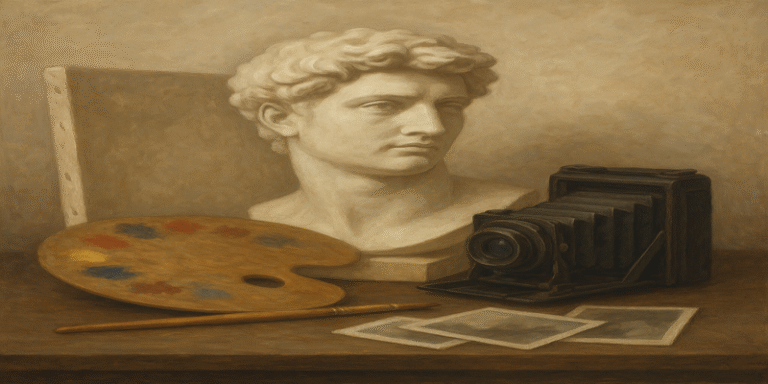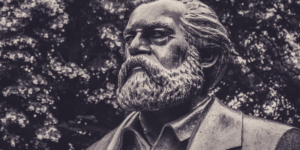Art is a multifaceted discipline that reflects the visual expressions of human creativity and imagination across cultures and historical periods. As a field of study, art encompasses both the creation of visual forms—such as painting, sculpture, photography, and digital media—and the scholarly analysis of these works within their historical, cultural, and social contexts. The discipline is not only concerned with the aesthetic qualities of art but also with how artworks shape and reflect broader societal values and ideologies (Danto, 2013).
This article explores several key topics in the field of art, including major art movements, theoretical approaches to interpretation, the role of art criticism, and contemporary debates in art history and theory.
Historical Overview and Art Movements
One of the central areas of art scholarship is the study of art movements. These movements are collective styles or tendencies that emerge within particular historical periods and cultural contexts.
- The Renaissance (14th –17th centuries), for example, emphasised a revival of classical ideals, humanism, and scientific perspective. Artists like Leonardo da Vinci and Michelangelo sought to harmonise artistic skill with intellectual inquiry (Hauser, 2005).
- The Baroque (17th century) contrasted Renaissance balance with dramatic compositions, ornate detail, and dynamic motion, seen in works such as Caravaggio’s theatrical lighting (Freeland, 2003).
- The Impressionist movement (19th century), pioneered by Claude Monet and Pierre-Auguste Renoir, shifted focus to the fleeting qualities of light and perception, challenging the academic traditions of realism (Hatt and Klonk, 2006).
- In the 20th century, Modernism and subsequent avant-garde movements such as Cubism, Surrealism, and Abstract Expressionism sought to break away from traditional representational art and explore abstraction, psychology, and the unconscious (Belting, 2003).
These movements illustrate how art evolves in response to broader cultural and intellectual shifts, often challenging the norms of previous eras (Edwards, 1999).
Theoretical Approaches in Art
The study of art relies heavily on theoretical frameworks that allow scholars to interpret meaning, style, and significance. Some of the most influential approaches include:
- Formalism, which focuses on analysing the visual and stylistic qualities of artworks—such as line, colour, and composition—rather than their social or historical context (d’Alleva, 2005). For example, a formalist reading of Mondrian’s geometric compositions would highlight the balance of line and primary colour rather than political symbolism.
- Iconography, developed by Erwin Panofsky, interprets symbols and motifs within works to reveal cultural and historical meanings (Elkins, 2000). For instance, Renaissance paintings often contain symbolic elements, such as lilies representing purity in depictions of the Virgin Mary.
- Semiotics, influenced by thinkers like Roland Barthes, treats art as a system of signs that communicate meaning. This approach is particularly relevant to contemporary art, where installation works often rely on coded messages (Bennett and Royle, 2023).
- Marxist and feminist critiques situate art within structures of power, ideology, and gender. For example, feminist scholars such as Griselda Pollock argue that traditional art history marginalised women artists, and their recovery is essential for a fuller understanding of cultural production (Wood, 1996).
These theories demonstrate how art is not only about aesthetics but also about interpretation, shaping how audiences engage with visual culture.
Art Criticism and Visual Literacy
Art criticism plays a crucial role in bridging the gap between artistic production and public understanding. Critics evaluate artworks through both aesthetic judgement and conceptual analysis, fostering debates about value, originality, and cultural meaning (Freeland, 2001).
Modern art criticism often balances between subjectivity and objectivity. While some critics focus on personal interpretation, others employ rigorous theoretical methods. For example, the reception of Jackson Pollock’s drip paintings divided critics between those who saw them as revolutionary and those who dismissed them as meaningless (Fried, 1998).
The rise of visual literacy in contemporary education highlights the importance of equipping individuals with skills to critically analyse visual media. As Roose, Roose and Daenekindt (2018) note, professional criticism is shaped by shifting discourses, reflecting broader cultural conversations around identity, politics, and technology.
Contemporary Debates in Art
The late 20th and early 21st centuries introduced new challenges for art theory and history. The emergence of postmodernism questioned the notion of universal artistic values, instead highlighting pluralism, hybridity, and the collapse of boundaries between high and popular culture (Kocur and Leung, 2012).
Moreover, the globalisation of art has expanded the canon beyond Euro-American traditions. Scholars now recognise the significance of non-Western artistic practices and the role of global art markets in shaping contemporary production (Harris, 2002). For instance, the rise of Chinese contemporary art, exemplified by artists like Ai Weiwei, reflects the intersection of politics, identity, and global capitalism.
The increasing integration of digital art and new media also raises questions about the definition of art itself. As Nelson and Shiff (2024) argue, contemporary theory must account for virtuality, interactivity, and the politics of technology, areas that traditional art history often overlooked.
Examples of Art and Society
Art has always been deeply intertwined with society:
- Diego Rivera’s murals in Mexico embody political and social critique, making art a tool for revolutionary education.
- The Dada movement responded to the chaos of World War I by rejecting conventional aesthetics, creating works that were intentionally absurd and provocative (Carroll, 1990).
- Contemporary street art, such as the works of Banksy, critiques capitalism, war, and consumer culture while simultaneously being absorbed by the global art market.
These examples show how art can function simultaneously as a mirror of its context and as an agent of change.
The field of art is rich and interdisciplinary, encompassing historical studies, theoretical frameworks, criticism, and contemporary debates. From the Renaissance’s celebration of humanism to postmodern pluralism and digital experimentation, art continually reflects and shapes cultural identities and values.
The discipline of art is thus not static but evolving, requiring ongoing critical inquiry. Understanding art means more than appreciating beauty; it means engaging with complex systems of meaning, power, and interpretation. As such, the study of art remains essential to grasping the cultural narratives that define human civilisation.
References
Belting, H. (2003). Art history after modernism. Chicago: University of Chicago Press.
Bennett, A. and Royle, N. (2023). An introduction to literature, criticism and theory. London: Routledge.
Carroll, D. (1990). The states of theory: History, art, and critical discourse. New York: Columbia University Press.
D’Alleva, A. (2005). Methods and theories of art history. London: Laurence King.
Danto, A. (2013). What art is. New Haven: Yale University Press.
Edwards, S. (1999). Art and its histories: A reader. New Haven: Yale University Press.
Elkins, J. (2000). Our beautiful, dry, and distant texts: Art history as writing. London: Routledge.
Freeland, C. (2001). But is it art?: An introduction to art theory. Oxford: Oxford University Press.
Freeland, C. (2003). Art theory: A very short introduction. Oxford: Oxford University Press.
Fried, M. (1998). Art and objecthood: Essays and reviews. Chicago: University of Chicago Press.
Harris, J. (2002). The new art history: A critical introduction. London: Routledge.
Hauser, A. (2005). Social history of art, Vol. 4. London: Routledge.
Hatt, M. and Klonk, C. (2006). Art history: A critical introduction to its methods. Manchester: Manchester University Press.
Kocur, Z. and Leung, S. (2012). Theory in contemporary art since 1985. Oxford: Wiley-Blackwell.
Nelson, R.S. and Shiff, R. (2024). Critical terms for art history. Chicago: University of Chicago Press.
Roose, H., Roose, W. and Daenekindt, S. (2018). ‘Trends in contemporary art discourse: Using topic models to analyse 25 years of professional art criticism’. Cultural Sociology, 12(1), pp. 56–84.
Wood, C.S. (1996). ‘Art history and its theories’. The Art Bulletin, 78(2), pp. 198–217.









